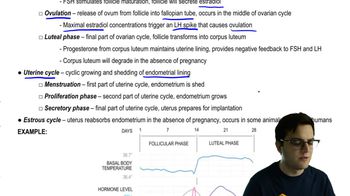In male mammals, excretory and reproductive systems share
a. The vas deferens.
b. The urethra.
c. The seminal vesicle.
d. The prostate.
 Verified step by step guidance
Verified step by step guidance Verified video answer for a similar problem:
Verified video answer for a similar problem:



 5:44m
5:44mMaster Sexual and Asexual Reproduction with a bite sized video explanation from Jason
Start learning